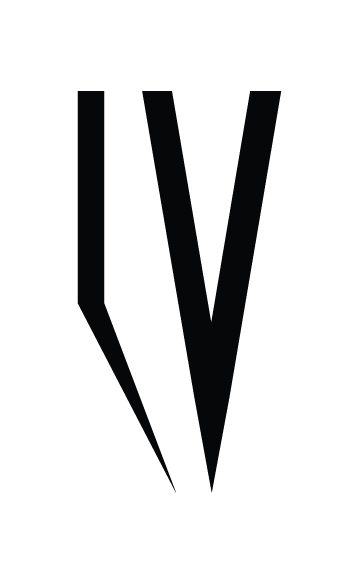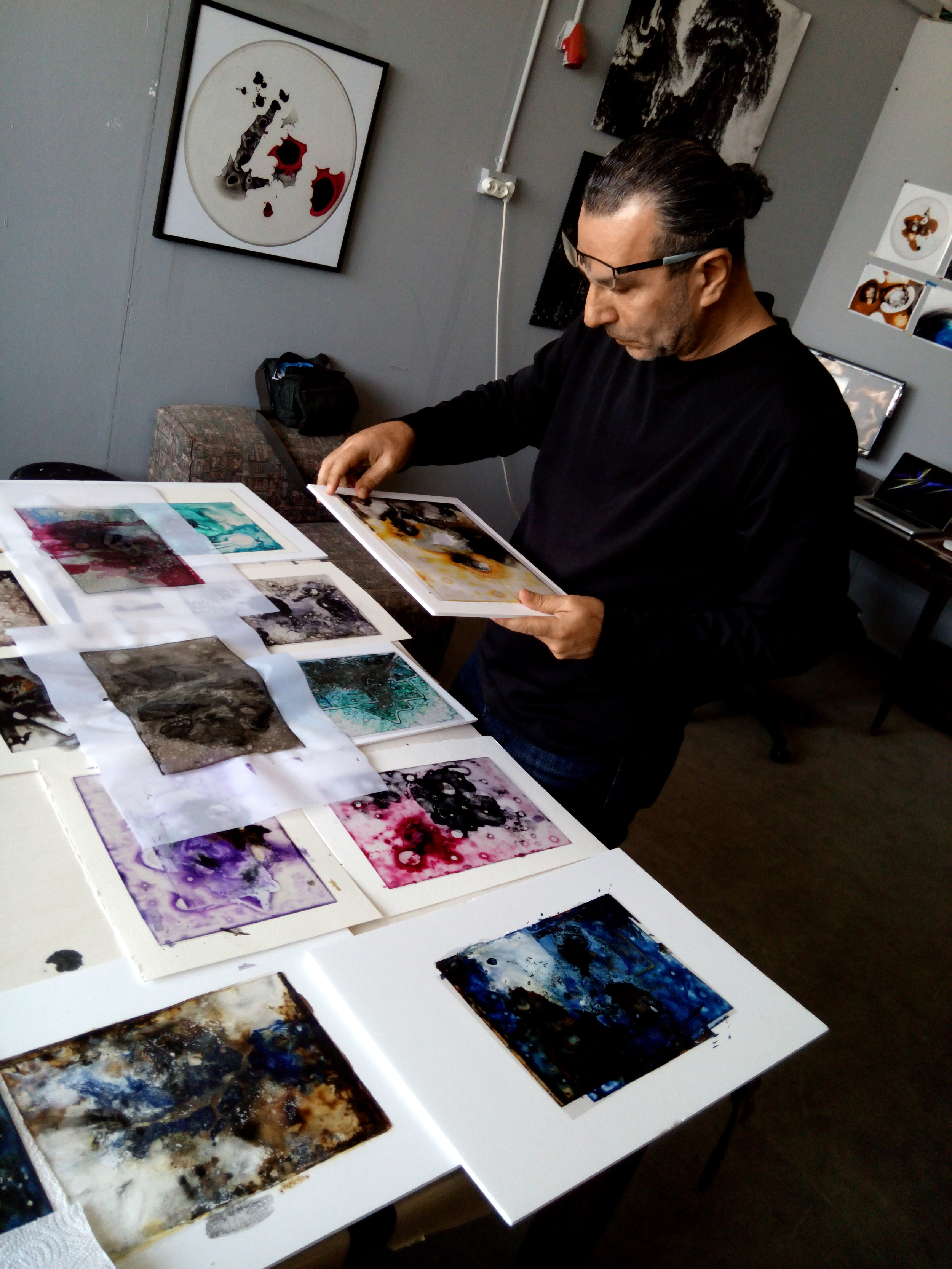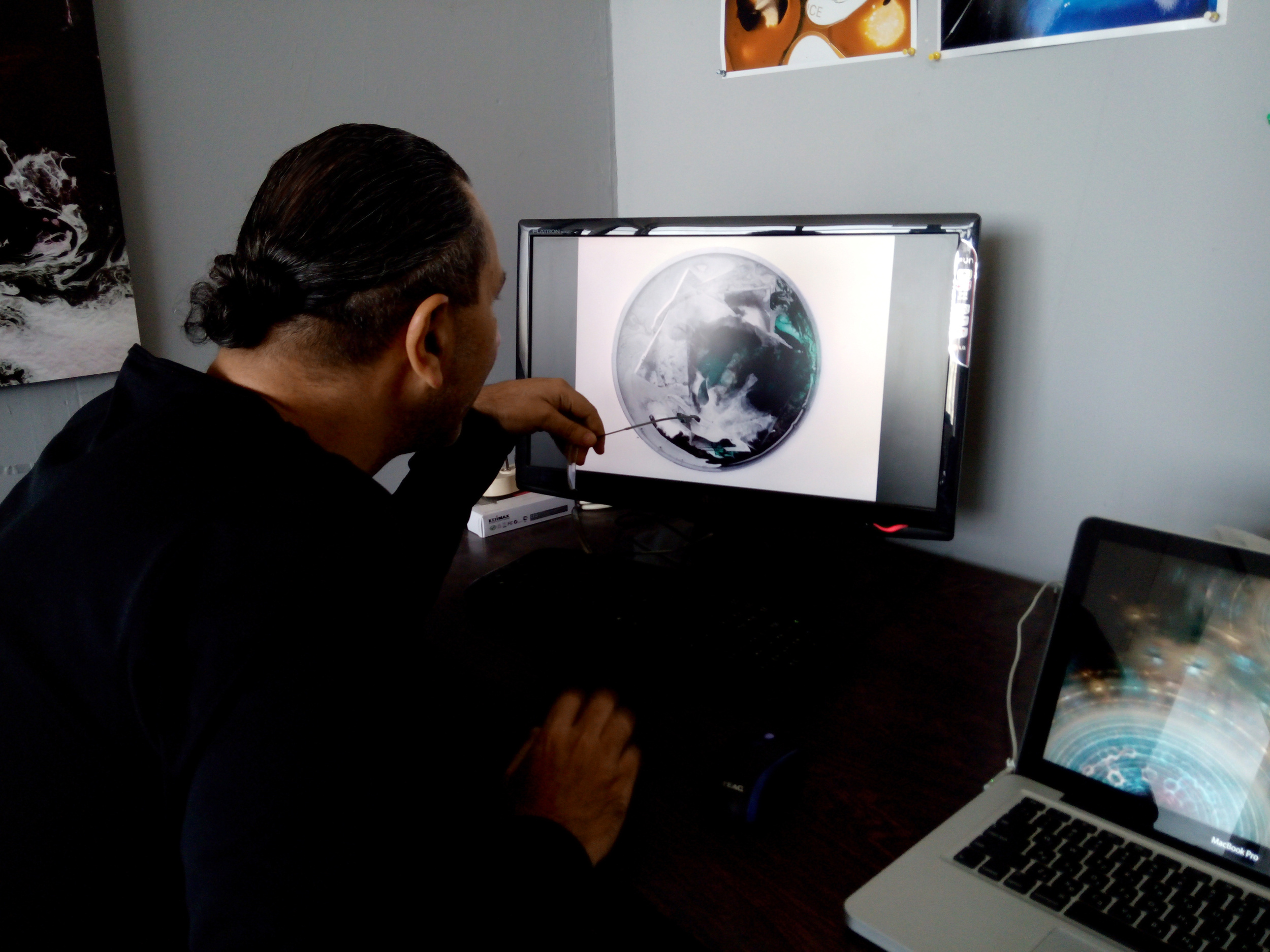Velvit Welcomes JD Doria
Tel Aviv based artist JD DORIA blows us away with the passion of his current works, his point of view on Aesthetics, and what it's like working in the Tel-Aviv art scene.
JD DORIA is a veteran working in the world 3D scanning and digital photography. With his special edition Petri-dish series for Velvit, he doesn't fail to impress one bit! We had the opportunity to pick the brain of this visual artist and left with a better understanding of why the petri-dish project is his passion, the philosophy Doria packs in to his works, and the written works that inspire him.
Velvit: Can you tell us a little about yourself as an artist? When did you find your calling?
JD Doria: Art took a slow pace with me, however when it came, it hit me with a tail of total departure. I was deep into the studying of Cinema when I discovered the “must” of art. Not something you play around with, but that which defines a threshold of existence, your existence. It was quite a powerful moment. Suddenly I had a spot in this universe, I knew ‘who I was’. Yet it soon became clear that no choice was really involved, it wasn’t the manifest of a matured, personal will, it was a must entailing no other options. The ‘me’ that surfaced was a powerful yet random emergence, and to carve a conscious space within such force was ahead of me and not at all a given. So, It can be said that my sense of ‘self’ was born with divergence, divergence from all I knew and understood till that moment, and divergence from the assumption that I was ‘born’ with a ‘ready self’, and what I did is follow the divergence. Only later it came to be the most intimate way I understand the term artist, because at the end of the day, in my view that which the artist provides (for a culture) is a form of divergence from the norm.
Kandinsky argues in his seminal book Concerning the Spiritual in Art that “To harmonize the whole is the task of art”. What I deeply respect in Kandinsky’s insertion is the comprehensive thought that there is an enterprise to Aesthetics, yet, I rather than harmonization I think of it in terms of divergence and curation of divergence from the known and established.
V: That was quite an introduction. In light of your charged relation with Art, how would you describe your work?
JD: Ten years ago I discovered the media of painting and begun to work my way into its language, while bringing along the technology and mindset I acquired from my experiences in cinema and in theater.
In the last 5 years my work has gone through a radical change. I introduced technology in multiple forms into the traditional process of painting, and since then my work has been a kind of mediation between painting and technology. One of the things I was interested in was exposing painting as multitude, of moments and images (frames if you want), rather than defined by one static final product.
Through the years I became acquainted with various technologies, like 3D scanning and digital photography, and was led to experiment with the possibilities that these technologies opened, I explored change in the medium upon which I work, moving from big canvases to small paper and overlaid films, and even migrating from the 2D surfaces of traditional painting to the 3D depth and fluidity of Petri Dish cultures captured on still camera.
The Petri Dish, in its symbolic power, reflects in my mind the growing powers of radical experimentation that characterize the beginning of the current century. As humans, our civilization may soon be able to play with the codes of our physio-logical mechanics and reprogram the inner folds of ourselves, and we surely lack the tools for orientation in such new landscapes.
It is a dramatic discontinuity with previous lines of history and it is happening extremely fast. In the last few years I contemplate more and more the importance that ‘aesthetics’, intended as the values embedded in our emotional and sensory perception of the world, may assume in the transition phase where we find ourselves. I tend to read aesthetics more radically as the responsibility for the “curation-of-becoming” and deem it important to make it a relevant voice in the ongoing debate about the future of our specie and of life at large.
I work on each Petri Dish by assembling configurations of interacting materials and through subtle interventions along the process, as a form of guided self-organization. By the agency of the materials, the Petri Dish becomes generative and pregnant with morphogenetic capacities, transforming itself into the very ground from which patterns emerge as complex structures, which are captured through technological ‘eyes’. The patterns that emerge are in a way stripped from a-priori meaning and intentionality, and one is left only with the aesthetic sense for orientation, allowing the kind of ambiguity in which the observer is immersed while contemplating flickering qualities devoid of specification.
The reflection I wish to provoke with this work is that becoming is fundamental to all material existence, differently from the stationary and inert quality through which we are used to think of matter, and that our tapping into that perceptive metamorphosis calls for an aesthetic intelligence; one which is capable of re-tuning our own becoming. I think of it as taking care of directionality.
V: What were some of the stages you went through in establishing your aesthetics? How did it impact you?
JD: We live in a radical time, actually an extremely radical time; The continuous project of unpacking the future enfold the mystery of discontinuity, a new line of history is emerging, distinctively different from the imperfect outcome of natural selection. It is rambling beneath our foundations and conditions, proposing ambiguous lines of constructive metamorphosis.
How we are going to cross to the ‘other-shore’? And what at all is the ‘other-shore’ in this context? How we are going to navigate our becoming within discontinuity and into unmapped territories? And what is our instrument of orientation?
Questions of orientation informs navigation and modify horizons of possibilities, this is how I read junctions in our history.
I consider aesthetics in its contemporary function as an intelligence of orientation. One that might inform navigation towards and beyond discontinuities.
Our previous passage from mythologies of creation into a game ruled by reason, can be seen as a passage between orienting devices, one that fundamentally inform the becoming of the modern man.
Yet I believe that we cannot afford anymore a navigation developed around a single concept, that of reason, but rather, we must investigate our aesthetics intelligence as a concert of orienting devices, belonging to art and not exclusively to the reasoned sciences.
Aesthetics is an impossible intervention, that of reconstructing orientation so that it will yield the wisdom of tomorrow.
V: It seems that your approaches and observations, as well as your work, are rooted in a very substantive philosophical standpoint. What works have inspired you to see things from such a perspective?
JD: Some of the best philosophical works were forged into Images. Such is the series of works of Lucio Fontana - ‘Cuts’ (from 1948 and on), which become his signature aesthetical gesture. The cut of the canvas manages to assimilate annihilation (or destruction) and infinity into a coherent view and structure. With Fontana’s work I met such an elegant codification of complex philosophical idea, in which space presents the ecology of possibilities (states) of an object; where by ‘changing’ the object (canvas with cut) the ecology of possibilities expands. Fontana manages to create an amalgam made of a paradox, the impossible meeting point between expansion-into-infinity and self-annihilation. He defines Aesthetics through a gesture captured in a work of art, and every time I observe and contemplate these works something in me moves and opens. (link - http://www.tate.org.uk/art/artists/lucio-fontana-1102)
A written contemporary work that inspires me, is the extensive and penetrative work of ‘Wildcat’, visible at Spacecollective. his series of articles: Cyber Soaring Humanity, is an ingenious exploration and articulation of mind on the verge of future and metamorphosis. Our civilization is, or should be, busy with upgrading its Mythos, in order to accommodate the historical discontinuities to which we arrived, yet the intelligence and depth able to touch such level is rare…preciously rare. I sincerely hope this work can move you the way it moves me.. (http://spacecollective.org/Wildcat/5462/A-Cyber-Soaring-Humanity)
V: In your Manifesto, you talk about Aesthetics being a conscious doing and a doing of consciousness. Consciousness is one of the many essences that make us more evolved as a species. When it comes to creating, do you think there is a need for complete subjectivity in art and doing? Can there be art works that defy an opinion?
JD: This is a great question mainly because it asks where can we locate artwork. Is it with the objective and universal or with the subjective and the temporal? I think of artworks as an inter-subjective form and as such they are always incomplete and always-in-progress. Each instance of interaction yield content in the form of cognitive states and in this sense the work of art grows in term of content (cognitive) with time. I like to look at artworks as a technology that attract clusters of cognitive states and as long the artwork ignites interaction they are alive. Take for example the work: Three Studies for Portrait of Lucian Freud – by Francis Bacon, 1965.
V: How did your growing interest in the study of Aesthetics change your Aesthetics? Or, your art? Or, did it?
JD: You cannot deal insensibly with something without it radically affecting the notions with which you enter the journey, the migration of aesthetics away from being located in the reality of the object alone, demanded for me to search it a new ‘home’.
V: Can you enlighten us a little about the art scene in Tel-Aviv?
JD: The Tel Aviv art scene is quite intense, how else? With an impressive number of artists that are exceptionally good in what they do, interesting galleries, and mostly an events’ scene and few interesting museums’ programs. What I love the most are emerging fresh attempts to explore. Take for example the exhibition of Aïm Deüelle Lüski: Horizontal Photography at Bat Yam Museum of Contemporary Art, which was selected by the Art Magazine Hyperallergic as one of Top 10 Exhibitions around the world. (http://hyperallergic.com/171712/best-of-2014-our-top-10-exhibitions-around-the-world/).
V: How has growing up, or living in Tel-Aviv influenced your work, if at all?
JD: Tel Aviv, as the locale on the verge of non-locality, gave me the sense, the notion that it is possible to seize the ‘heart’ of the world, that it is within reach. True, it is not the notion of Tel Aviv today, but still this notion remains with me.
V: The idea of “Growing” your images is a very inspiring way to work. Can you give us some insight in how you prepare for this process?
JD: One way to describe it is that ‘material processes’, a whole diverse spectrum of them, is what I use as the equivalent of ‘brushes’ to create my works. Weaving them into generative coherency, is my singular technique. I learned through an extensive process of experimentation and aesthetic intuitions to ‘feed’ the ‘generativity’ of each Petri Dish with micro- interventions, a mode of taking care of the ‘growing’ of those images. Much like a writer‘grows’ a story and a philosopher ‘grows’ a thought.
V: As someone who creates their images more organically, what are the challenges you encounter during your process, if any?
JD: The challenge is to pick the signature of the moment as an extension of myself and by that to alter the limits of ‘my’ imagination. Our imagination unfolds contingent limitations and there are ways to extend beyond them, co-creating with dynamic processes is one of them, collaborating is another.
V: When documenting the process of the petri-dish compositions, how long would you say one petri-dish series takes to mature?
JD: The duration for each work to reach its pictorial apex takes a ‘moment’, but to pull the thread of magical-alignment between the materials takes a lifetime of commitment.
V: How do you determine when a piece is “done”? How do you draw the line of finiteness?
JD: I follow the trail of ambiguity in relation to knowing and not knowing within a creative process. This line of ambiguity allows a subtle interplay between epistemic mode and creative action-ability without each of the participating modes closing upon itself. So proper knowing for me comes only in retrospective.
V: How do you refresh your perspective?
JD: I work in condensed periods of experimentation and creation and then I do other things altogether. Beside that I use traveling as circumstance for refreshing mind and perspective, for the actual sense of transit and the shifting borders, culture and ambiance, provide an effect for me resembling meditation.
V: Tell us a little bit about the Petri Dish Special Edition for Velvit in a few sentences.
JD: These are the works with which I started the Petri Dish Project in 2013 and it is the first time they are published. Mainly I chose those Black and White works because they correspond with the style of Velvit. The special edition is made of 3 Petri Dish works, each work is a series of 4 images, so all in all the special edition is made of 12 images, available as Print on art paper (35 x 50 cm), in an edition of 5.
V: What can we look forward to seeing from you in the next year? What is next for JD Doria?
JD: In the short term few Exhibitions are on the way, this passed March I participated in an exhibition In Florence Italy - "Mondi Possibili", Curated by Anna Mola exhibited in Simultanea Spazi D’Arte. Then at the end of June I did an expose in the Warsaw International Art Expo, curated by Pamela Cento, held in the Galleries and exhibition space: DAP1 and DAP2 in Warsaw. And in October i will be in London for The Artists Fair with some of my new works.
I start to develop a project in collaboration with a number of artists, beginning with the Petri Dish works and unfolding via a multi-dimensional installation to accommodate the theme: Matter as Storyteller. We wish, through the dimensionality of the installation, to challenge the notion that frames Matter as an inert and passive component of life. And to investigate the exotic option that storytelling (not necessarily in human terms), is a concert of open-ended gradients and processes. Storytelling in this work is exposed as a generative feature residing in matter’s dynamic states. Through the meeting between human, matter, inorganic (colors) and organic (live matter) and machine (algorithm), material processes will be suggested as Storytellers, under the claim that we are seriously underestimating the imagination of matter...
We are now at the initial stage of development and I am seriously excited about this project and wish to find the way to fully realize it.
V: If you were to write 2-3 sentences on the color black for your manifesto, what would it say?
JD: - From the collection of poems ‘Before the Dark Gate’ by David Vogel
In the black distance
the galloping of invisible horses is sown,
fades away.
For more on JD Doria, please visit his artists page and view his exclusive series for Velvit in the curation ANIMYSTIC.





